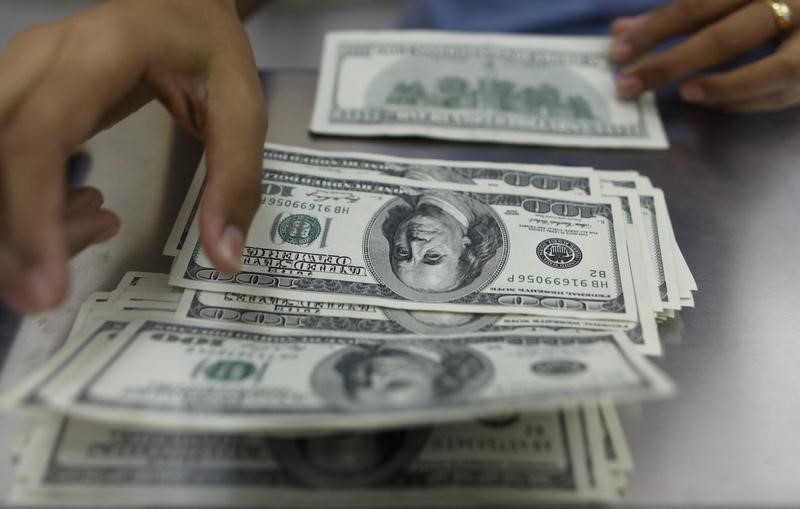Investing.com – The dollar fell against a basket of major currencies as data showing the U.S. economy created more than 300,000 jobs in February were offset somewhat by weaker-than-expected wage growth, denting expectations for a faster pace of inflation and rate hikes.
The U.S. dollar index, which measures the greenback’s strength against a trade-weighted basket of six major currencies, fell 0.13% to 90.12.
The U.S. economy created 313,000, well above the 239,000 jobs created in January, according to a report released Friday by the U.S. Department of Labor. That beat economists’ payrolls forecast of 200,000 .
The jobless rate remained unchanged at 4.1%, missing economists’ forecasts for a 0.1% decline to 4%.
Most of the attention, however, was focused on the average hourly earnings which grew just 0.1% in February, missing expectations for a 0.2% rise.
The dollar turned negative after moving sharply higher on the initial headline number of 313,000 new jobs, after traders cut their bullish bets on a fourth rate hike this year as many had expected wage growth to continue to rise at a faster pace after January’s strong reading.
"The wage numbers should allay fears of a quick pick up in inflation, and as such we still see the Federal Reserve hiking interest rates three times this year, the same pace as that seen in 2017," CIBC said.
That said, however, the data is expected to have little impact on the Federal Reserve’s interest rate decision in two weeks, with many traders expecting the central bank to hike rates by 0.25%.
Also weighing on the dollar was a sharp uptick in the Canadian dollar as USD/CAD fell 0.50% to C$1.2833 after a sharp uptick in oil prices boosted the loonie.
GBP/USD rose 0.33% to $1.3853, while EUR/USD rose 0.09% to $1.2321.
USD/JPY rose 0.57% to Y106.82 after the Bank of Japan decided to stand pat on interest rates, and kept its target on bond buying levels unchanged, tempering expectations that the central bank would unwind its easing policy sooner rather than later.
